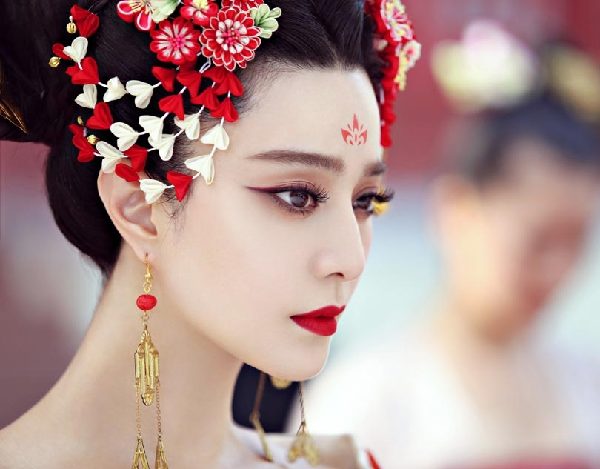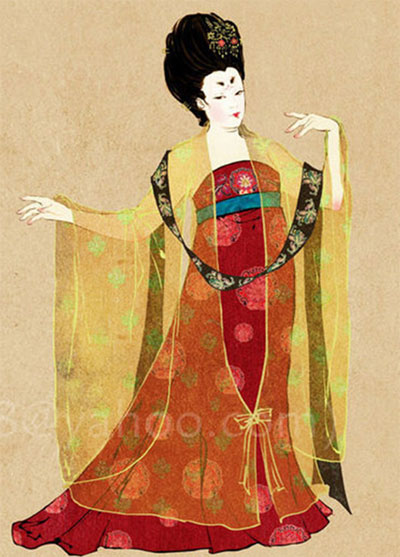
A still shot from Fan Bingbing's latest television series The Empress of China.

A painting shows the dress style of women in Qin and Han dynasties.
Chinese actress Fan Bingbing's latest television drama, The Empress of China, has been getting a lot of attention, but not in the way the producers originally hoped.
The story, based on the life of China's first and only female empress, Wu Zetian of the Tang Dynasty (618—907 AD), was removed from the air after its debut in December due to revealing costumes that emphasized the cleavage of the female characters.
When it returned to the small screen in January, scenes showing the revealing necklines were cut off and replaced by somewhat magnified shots of the actress' heads.
This move by China's media watchdog failed to win support among viewers. The majority of them called the cut "unnecessary" as the costumes in the show only resembled what women truly wore during the Tang Dynasty.
Skirt, shirt and a cape
According to Li Hong, researcher and vice curator at the Henan Museum, skirts, dresses and capes were three major elements in women's fashion during the Tang Dynasty.
"From historical records, these three items were indispensible for women back then. Women of Tang, regardless of class, also put more thoughts into dressing themselves than we do today.
"Waiting several years for a piece of new clothing to be made was normal. That's how much people cared about the way they dressed back then," Li said.
As for the exquisite costumes worn in The Empress of China, Li said the costume designers obviously "did their homework".
A one-piece garment was the main formal wear for women. Those in higher class wore at least three layers: an inner garment, middle layer and outerwear. Collars on these layers were always shown and the colors coordinated to match the outermost layer. The sleeves and hemlines were both very wide.